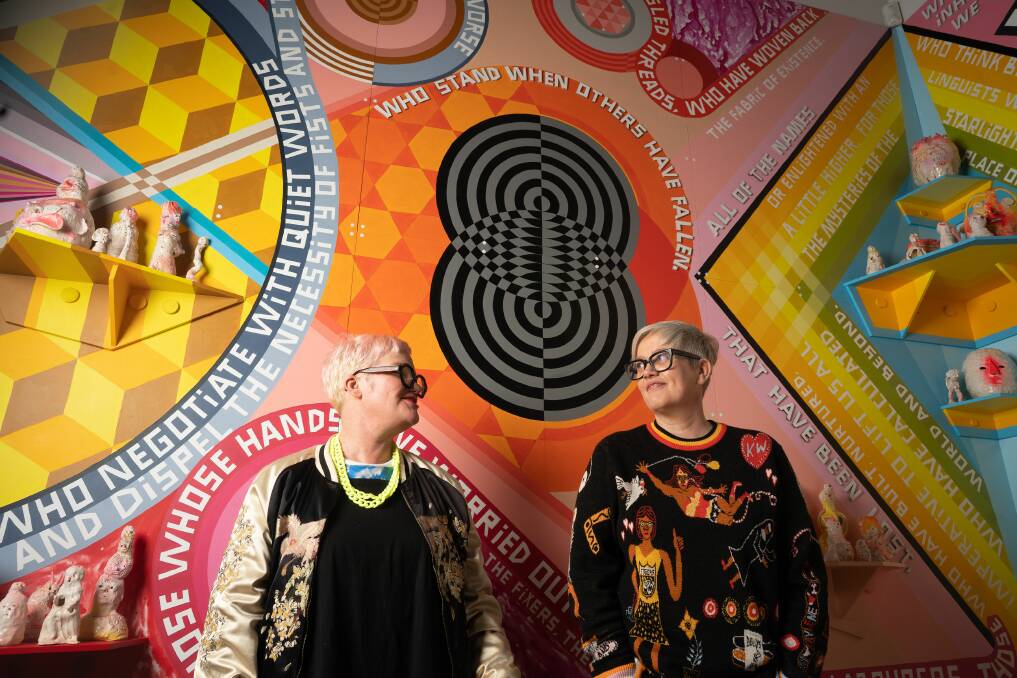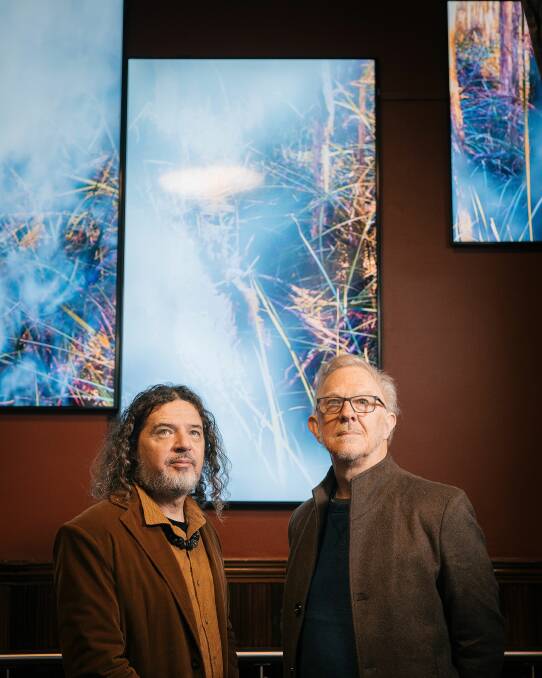
The Queen Victoria Museum and Art Gallery has been a cultural institution in the community for 130 years. However, though exhibits have come and gone, many of the colonial works the gallery has displayed have been the dominating pieces. The most recent rehang, and the now new permanent exhibition of the gallery, has led to a more inclusive and diverse range of both works and artists by sharing LGBT+ and Indigenous voices.
Subscribe now for unlimited access.
$0/
(min cost $0)
or signup to continue reading
The curation
Any exhibit is curated with the intention of helping an art appreciator see what meanings are behind the work in front of them or the best way to view the work to get the most out of the exhibition.
Senior curator of visual arts and design Ashleigh Whatling said the exhibit was a long and slow build-up, with the final product taking years to come to fruition due to needing to understand the size of the collection, what was in it, and the history and context that surrounded the pieces.
"[When I first walked in] I saw the gallery beautifully hung, but not necessarily reflecting the community I had got to know," she said. "I really wanted to make the gallery more inclusive and more welcoming and more reflective of the community who live here."

Ms Whatling wanted to bring an exciting and contemporary hang to the permanent display space by changing the curation from grouping by genre or module to by story instead. However, the works were also curated using sight lines to allow audiences to view multiple works at the same time and make connections.
"I wanted to give the audience the chance to make their own connections," Ms Whatling said. "But, I hope they also join the together the breadcrumbs I have left for them. "[The works] all speak to each other."
Indigenous and LGBT+ artworks have been carefully curated with colonial works to create a more balanced representation of the past and the now. Ms Whatling wanted people to question the authority of an institution, and to remember that art was art and not always an accurate representation of the facts.
"There's a beautiful queer community here, migrant community here, there are so many amazing people in this town," Ms Whatling said. "It's important to have them represented."
The senior curator hoped that through the new rehang, QVMAG would step into an era that embraced inclusion and diversity with open arms. With so many stories out there to tell, Ms Whatling said there was still more to tell and display.

The works
Though the rehang had so many incredible works to focus on, The Examiner picked just two to have a deeper look at with the artists. The first work, Taymi Ningina, was created by Vicki West, Dave Gough, and Darryl Rogers. The work is an Indigenous piece that highlights the gallery's - formerly a tea tree forest - presence on Indigenous land.
The multimedia piece began as a conversation about how people could look at the museum, but also look through it and see what once existed with the natural landscape.
"I designed the stairwell using multiple screens," Rogers said. "The screens sort of become windows in the walls and push through to that forest that is, in some ways, metaphorically still there now."
Gough said he wanted people to see the depth of time and culture that was woven throughout the piece, with the work highlighting practices such as weaving and fire stick creation. Though the sounds of birds are within the art, Gough said he wanted audiences to be able to feel like they could almost smell the space the art was created in.
"The simple timing of it is beautiful," he said. "It's mesmerising to see and watch it slowly forming. It's 28 minutes and people are going to see movement on-screen and they will keep walking and look back and see different movements."
The work also includes a reproduction of Robert Dowling's portrait of Queen Victoria, which has been a staple in the stairway of the gallery for many years. Both artists hoped the rehang would start conversations around truth-telling.

Another work, A new kind of union created by Mish Meijers and Tricky Walsh, is one of the representations of the LGBT+ community in the new rehang and is a contrast of shapes, colour, and poetry. The work pays homage to unnoticed labour in the community.
The two artists worked to each other's strengths, with Walsh neat and specific and Meijers more focused on letting hands and ideas be a guide. The end result was a piece that is contemporary and eye-catching, and can be entered and appreciated through several different avenues.
The artists said the work started from the conversations held with Ms Whatling and other people at the gallery who wanted to bring unrepresented voices to the museum's space.
"Those natural conversations that artists are having with museums and staff... is that you don't want it to be filled with one colonial view, and that idea that yes those names are significant but what about all those people in the past who have done incredible things," they said.
"We wanted to memorialise and give some space to the not named, but amazing people, that have done incredible things that won't get recognised any other way."
Meijers and Walsh said it was important to have queer voices within museums and to gently dismantle the system that currently exists by including as many broad voices as possible.
"You can talk about being inclusive, but to actually be included in the collection [at QVMAG] and have that voice be diverse, that's the actual proof in the pudding," they said.
The art gallery is located at 2 Wellington Street, Launceston, and is free to enter daily from 10am-4pm.


